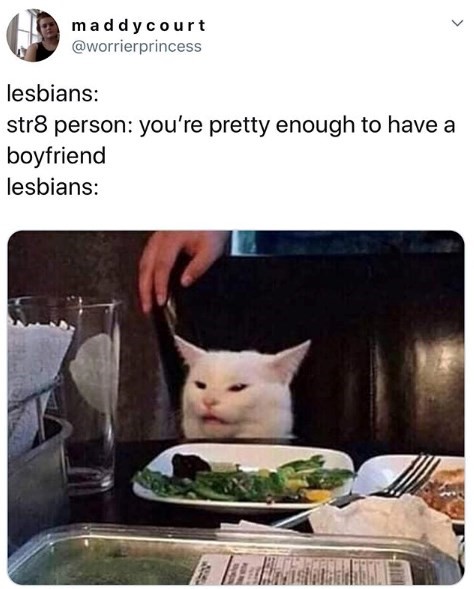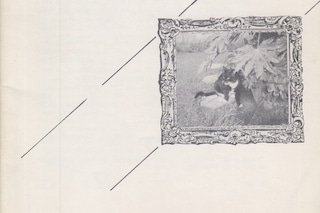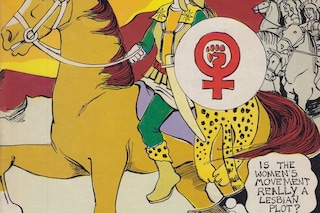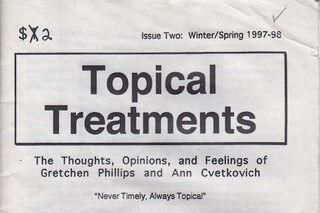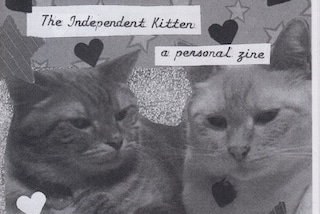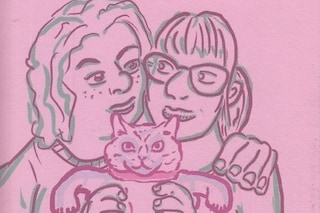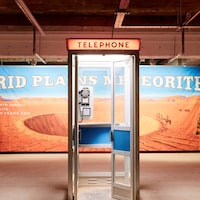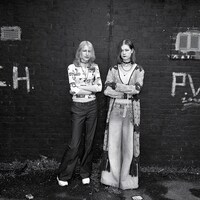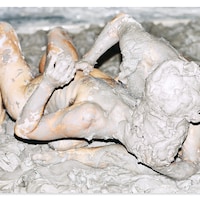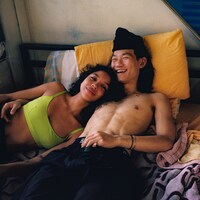The organiser of The Wide World of Lesbian Cats exhibition on why cats have illustrated everything from dyke zines to lesbian memes
Amongst the queer community, the cat-loving lesbian is a pretty well-established trope and, as anyone who has read this Autostraddle article knows, it’s also pretty well-founded: lesbians are more likely to parent a cat than their hetero counterparts. Ironically, what’s ultimately less clear-cut is what it means to identify as a “lesbian”.
The term has garnered a decidedly bad rep in recent years, in large part due to the trans-exclusionary groups who have hijacked Pride with illogical claims that trans women somehow contribute to lesbian erasure (an argument so bizarre that it doesn’t deserve unpacking). Even when it’s the descriptor that seems to fit best, individuals are increasingly wary of identifying with the term “lesbian” due to its associations with a vocal minority that seeks to oppress trans women from within the LGBTQ+ community.
Reductive definitions of lesbianism are something I’ve struggled with as someone that has spent most of my “out” years in lesbian-centred spaces, and who has made a home within lesbian culture – which can be boiled down to jokes about u-hauling and “Fast Car” by Tracy Chapman – more generally. Yet, as I’ve increasingly questioned my gender identity and made a habit of dating everyone except the cis dudes who all too often don’t respect my “they” pronouns (it’s not that hard, make the effort), I’ve been left with some questions. Firstly; “am I still welcome to describe myself as a lesbian?” and, secondly; “if I’m not a lesbian then who and what the hell am I?”
“Cats are connected with deviant forms of femininity like witches, spinsters, and lesbians. So when you see cats come up, the pejorative assumptions are kind of reclaimed in a way” – Rachel Corbman
Whilst pondering some of this and scrolling through Instagram, I came across a post celebrating the opening of The Wide World of Lesbian Cats, an exhibition at NYC’s Gay Center. Tracing the prevalence of cat imagery through early dyke print culture, lesbian comics like Dykes to Watch Out For and Hothead Paisan, and current-day meme accounts like @xenaworrierprincess, it’s less about our feline friends than it is about how ideas of “lesbianness” are cultivated and circulated. Specifically, it picks up on how lesbians have played with pejorative cultural associations linking cats and dykes, with cats cropping up in queer media as a self-referential in-joke amongst lesbian-identified people.
Purposefully including the transmasculine people and trans women that have moved within lesbian communities throughout time, rather than just the cis women who have come to gate-keep these spaces in the current day, the exhibition gestures towards a more expansive definition of dyke-dom. By exploring how lesbians have represented themselves and the network of references they have created over time and continued to draw upon, it seems to be suggesting that lesbianism is more a question of shared sensibility than it is cisgender biology – something that I’m sure we can all wholly get behind. To discover more I sought out the exhibition’s organiser, Gender and Sexuality Studies scholar Rachel Corbman, to answer some of my questions.

As a member of the coordinating committee of the Lesbian Herstory Archives, the world’s largest collection of materials about and by lesbians, Corbman is clearly passionate about the ways that lesbian history has been preserved. In many ways, the exhibition is less focussed on the artefacts, be they zines or protest materials, on display, but rather how lesbians have defined themselves through their own media, from print to digital. Whilst Corbman admits that “in some ways, the exhibition could be read as saying that lesbians invented the cat meme,” The Wide World of Lesbian Cats, is primarily a look at; “different ways that information has travelled through a specific and self-referential subculture.”
In fact, the Lesbian Herstory Archives is itself a lesbian reference, featured in Cheryl Faye’s cult classic The Watermelon Woman, a movie that’s also about archiving; specifically the process of seeking out and preserving a Black lesbian film canon. “It’s called the C.L.I.T. (Center for Lesbian Information and Technology) but I think it is an intentional reference to the Lesbian Herstory Archives. The Watermelon Woman comes out 20 years after the founding of the collection and you can see that the archive already circulates as a reference, especially in the US lesbian cultures.”
Chatting over Whatsapp video call, with the cat she’s looking after occasionally popping into view, she explains that the idea for the exhibition developed pretty organically from her own academic work. “I do a lot of research that’s historically based, looking at the 70s and 80s. I was spending a lot of time with archival documents and I noticed a lot of cats coming up.” Sounds simple enough, but does the exhibition provide much info on where exactly the “lesbians love cats” cliché (which seems very much alive and well in these earlier decades) comes from? To some degree, yes. Although Corbman admits that “it’s not particularly an interest of the exhibition to trace down” the lengthy history of cats being used to reference lesbianism, she’s keen to explore how lesbians have come to self-identify with this stereotype.
“The larger argument is that cats have a lot of associations culturally that are quite ingrained by the 70s and 80s, which is when the exhibition starts,” Corbman says. “Cats are connected with deviant forms of femininity like witches, spinsters, and lesbians. So when you see cats come up, the pejorative assumptions are kind of reclaimed in a way, like in the way that ‘dyke’ is reclaimed from being a slur against lesbians. Cats kind of recirculate specifically because they have all of these associations.”
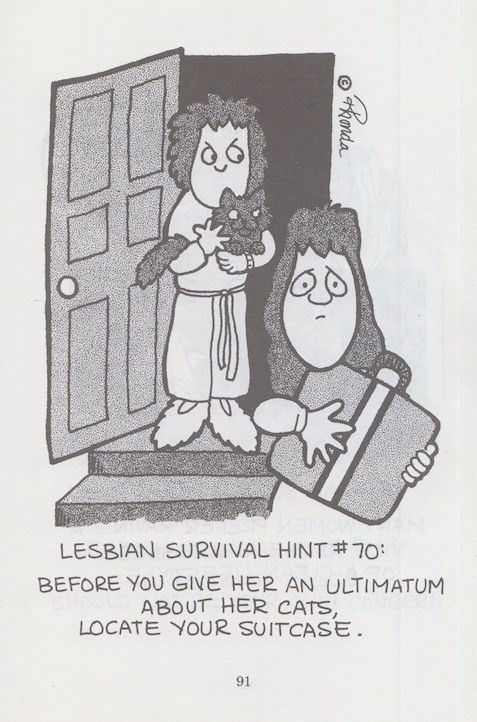
All this talk of references and self-representation might seem like an endless loop of in-jokes, but it makes sense. Marginalised by the feminist movement’s queerphobia and maligned by misogyny within the LGBTQ+ rights’ movement, lesbian-identified people (particularly the POC, trans, and gender-non-conforming people within this group) had to work doubly hard to cultivate a consciousness and culture separate from the reigning heteropatriarchy. In fact, “lesbian” is itself a pretty recent identity that emerged out of the post-Stonewall cultural moment. As Corbman explains; “there are different terms people would use historically and there’s not really the idea that there’s a separate category of person that is a ‘lesbian’ until quite recently.” All this means that dykes have been involved in a process of forging their own identity over the years, rather than conforming to any pre-determined criteria of what lesbian “should" mean.
However, many of the Instagram accounts referenced in the latter part of the exhibition on current day lesbian digital culture look to the past – most notably the “dyke imagery” of the historically-focussed @h_e_r_s_t_o_r_y . Yet these accounts go beyond nostalgia and look at ways that activists of the present can use the past to move towards the future; highlighting forms of self-fashioning, protest tactics or queer joy that might inspire political action. “(These accounts) open up new ways of thinking about the past to create new cultural work,” Corbman says. “The references aren’t about the 1970s, they’re about the present, allowing us to respond to that (in order) to create new forms of activism.”
The Wide World of Lesbian Cats shows that while there is some kind of “lesbian history” that has been pieced together and preserved from roughly the 1970s onwards, it doesn’t hold any singular definitions for us to follow. Rather, it affirms the openness and malleability of “lesbian” as a cultural identity and political label, inviting queer individuals of various gender identities and orientations, not just cis gay women, to form their own relationship with what the term might mean to them. For me, it means that no TERF or "gold-star" can take away my identification with dyke culture and the gender queer people who should always have a place within it.
